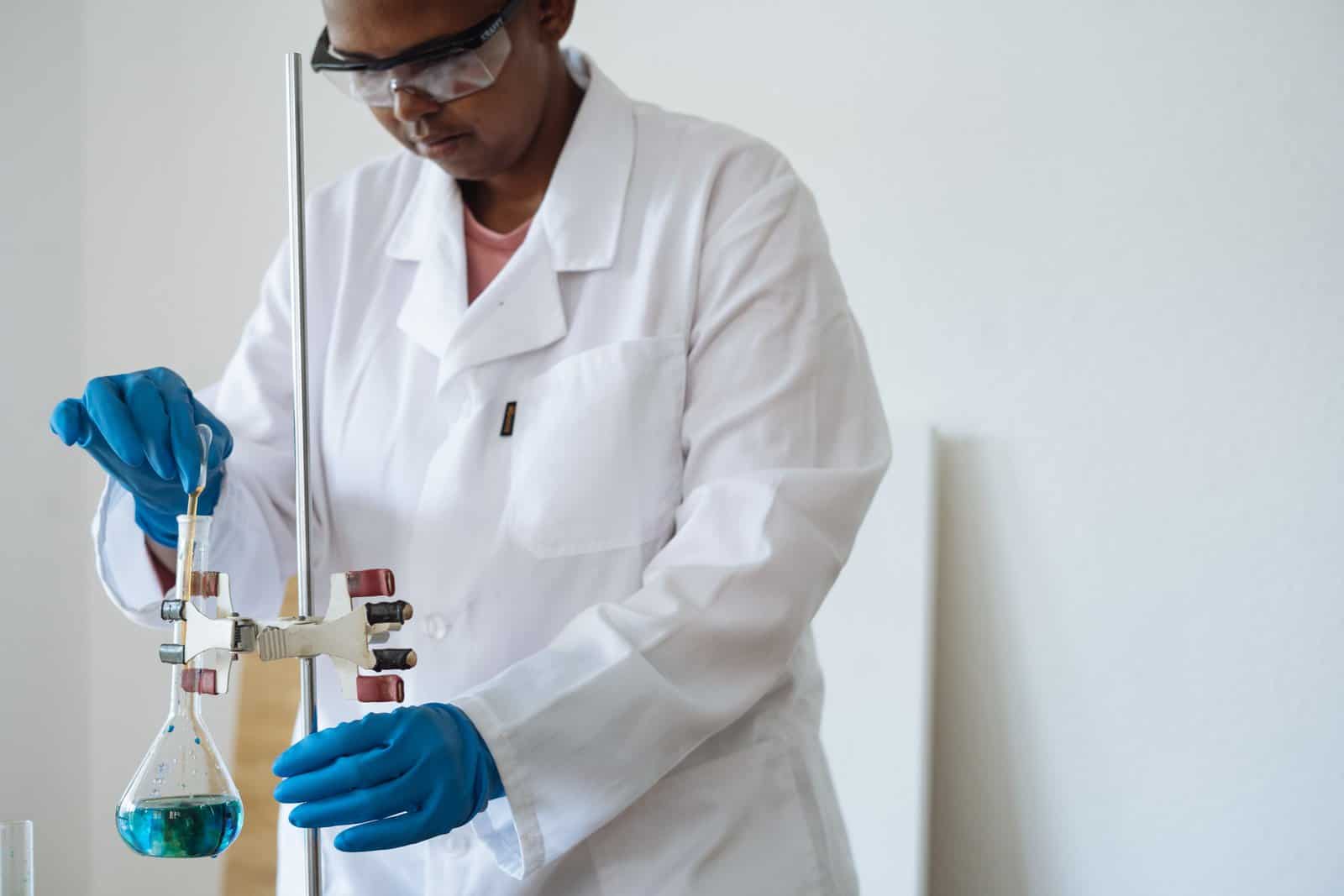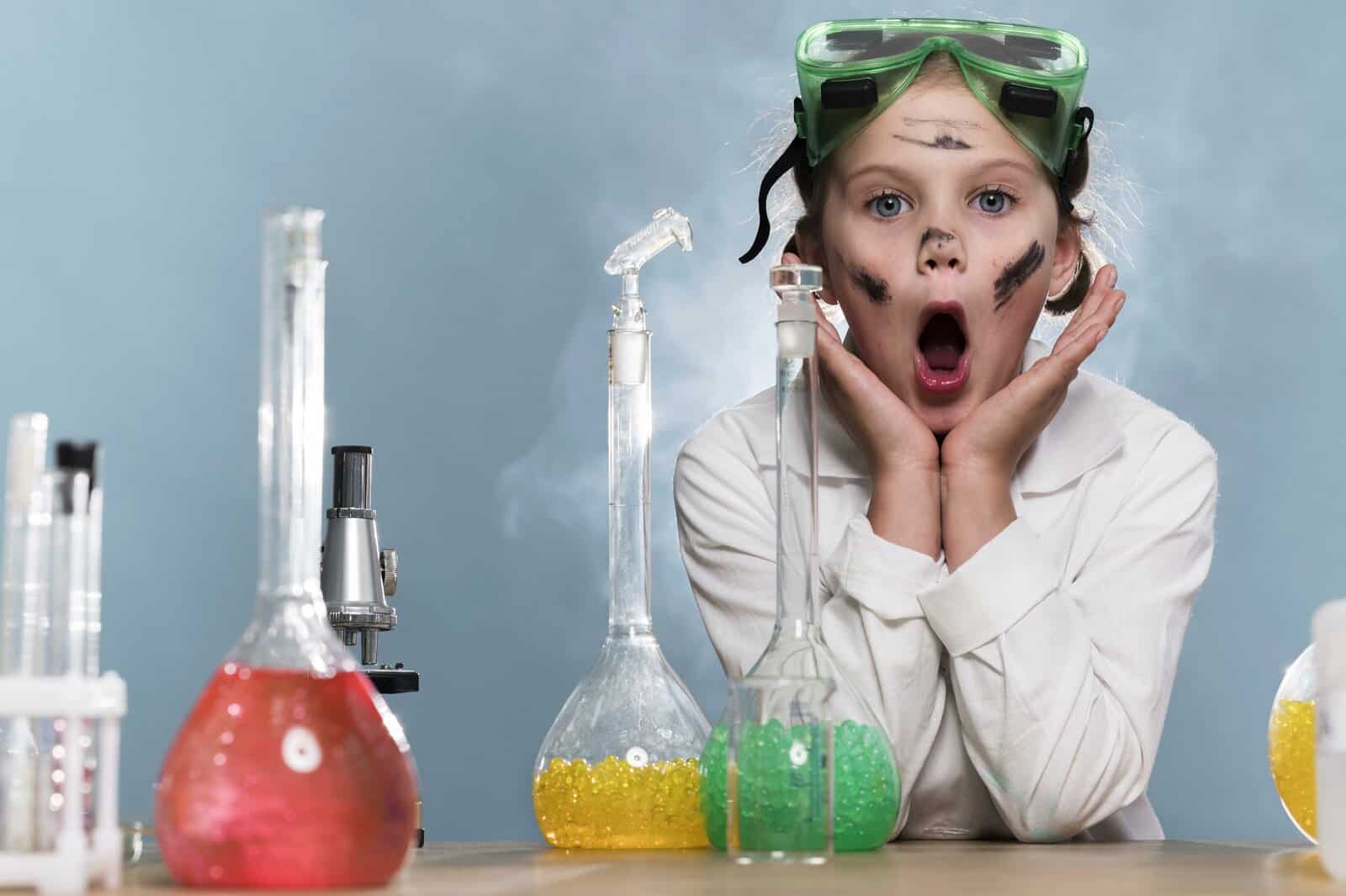
Chemical Reactions: A comprehensive guide
Chemical reactions happen all the time in our daily lives, whether we notice them or not.
Everything that surrounds us, including water, air, plants, and inanimate objects, even animals and humans, is made up of a huge amount of tiny structural units that we call molecules, and the latter is composed of smaller parts that we call atoms, which interact with each other in various types of interactions. Chemical, according to a complex congenital system, shapes our universe and this vast world for us in its smallest details.
A chemical reaction is a process in which one or more substances are transformed into one or more new substances. The starting materials for a chemical reaction are called reactants. The new substances formed during a chemical reaction are called products.
What types of chemical reactions occur between atoms? How do they occur and on what chemical basis? This is, in fact, what we will review in this article, in detail in mentioning the types of those chemical reactions that arise between various molecules and in various physical media.

What are chemical reactions?
A chemical reaction, in its simple definition, is a process of radical or semi-radical chemical change of a compound so that, as a result of this reaction process, another compound is produced that is different from the initial compound that we started with. The essence and basis of chemical reactions is the disintegration of the chemical bonds that make up the interacting compound (or compounds), and the emergence of new chemical bonds between the atoms that make up those compounds.
For example and illustration, we have the combustion reaction (which occurs when you set fire to some types of furnace gases) as follows:
C3H8 + 5O2 → 4H2O + 3CO2 + energy
What we notice is that the first compound C3H8 was composed of two atoms, carbon C and hydrogen H, while the second is an oxygen molecule composed of two atoms of oxygen O2. As a result of the chemical reaction between them, we got two completely new compounds, water, and carbon dioxide.
And what simply happened here is a reaction between two compounds that resulted in two new compounds, and this interaction we call a chemical reaction.
We will now move on to the various types of chemical reactions between the different compounds around us.
Benefits and uses of chemical reactions
Photosynthesis Process
Chemical reactions are very useful. They help organisms to grow and are useful for sustaining life on Earth. For example, cells in our bodies use oxygen and sugar as starting materials to produce energy in a chemical process called respiration.
This process produces carbon dioxide and water. Plants perform a chemical process called photosynthesis. This process uses light energy, and the reactants are carbon dioxide and water. The process of photosynthesis results in sugar, which is used for plant nutrition and growth, in addition to oxygen gas.

Material Transformation
Scientists and engineers take advantage of chemical reactions to transform less-used materials into more useful ones. For example, crude oil or petroleum is extracted from the ground and undergoes chemical reactions that transform it into a useful fuel such as gasoline. Gasoline is used as a fuel for cars and other vehicles.
Gasoline undergoes a chemical reaction in a car’s engine called combustion. This reaction produces carbon dioxide and water. Unfortunately, chemical reactions can also have negative effects on the environment and our health. When gasoline and other fossil fuels are burned, carbon dioxide is formed, which is a greenhouse gas, and it is known that greenhouse gases increase the temperature of the planet.
How does the chemical reaction occur?
Now that we know what chemical reactions mean, let’s explain how these reactions happen. There are two basic steps in any chemical reaction.
The steps of a chemical reaction are:
- First, the bonds between the reactants are broken.
- After that, the products are formed as a result of the formation of new bonds.
Let’s take a look at the magnesium combustion process (burning of magnesium) to help us understand the process.
We heat a piece of magnesium metal using a Bunsen burner by holding it with tongs and exposing it to the burner flame.
When magnesium ignites it burns with an intense white glow. It is a grayish-white powder that can be collected using a watch bottle. The two reactants here are magnesium metal and oxygen gas in the air. The product of this reaction is magnesium oxide. It is the powder we collected in the watch bottle.
Magnesium metal +Oxygen gas==> magnesium oxide
Now, let’s clear some space to see how this interaction occurs.
First, the double bond in the oxygen molecule must be broken. Therefore, thermal energy is required to break this strong bond. Once this bond is broken, each oxygen atom combines with a magnesium atom, and two new chemical bonds are formed. The new substance formed is magnesium oxide. We have just illustrated the combustion of magnesium using diagrams and the word equation that represent this. But there is a more useful way to represent chemical reactions. It is the chemical equation.
A chemical equation is a set of chemical formulas that represent the reactants and products in a chemical reaction.
A chemical equation may also include some information about the conditions for a reaction to occur. Examples of such conditions are:
- the temperature
- or pressure at which the reaction takes place
- or whether the heating is necessary. Below is a word equation for the combustion of magnesium.
This equation shows the names of the reactants and the product.
Magnesium +Oxygen heat magnesium oxide
To write the chemical formula for each substance, we need to use the chemical symbol for each element. The chemical symbol for magnesium is Mg, and the chemical symbol for oxygen is O.
The balanced chemical equation for this reaction is: Two Mg plus O2 react to form two MgO. Magnesium and oxygen are two elements;
So a chemical formula will contain only one chemical symbol. Oxygen gas is found in nature with the molecular formula for the element O2. Magnesium oxide is a chemical compound. Its chemical formula contains the two chemical symbols for magnesium and oxygen.
2Mg+ O2–à2 Mgo
Let’s now look at the other types of symbols used in chemical equations.
A plus sign is always used between different reactants or products. In this equation, we used a plus sign between the reactants magnesium and oxygen. But we didn’t use a plus sign on the product side of the equation; Because magnesium oxide is one substance. The reaction arrow points from the reactants to the products. The symbol Δ is used to denote the addition of heat to the reaction.
There are also two types of numbers used in a chemical equation. The number may be part of the chemical formula. In this case, it is called a lower number.
For example, the lower number two in the formula for oxygen indicates that the oxygen molecule is composed of two oxygen atoms.
The second type of number used in chemical equations is written before the chemical formula and is called the modulus. For example, the number two written before the chemical formula MgO means that there are two units of magnesium oxide in this equation. This type of number is used to weigh a chemical equation.
The law of conservation of mass states that mass is neither created nor destroyed during a chemical reaction.
Let’s look at the equation again. Before the reaction takes place, we start with two magnesium atoms and two oxygen atoms. And after the reaction has taken place, we’re left with two magnesium atoms and two oxygen atoms. But they combined to form the compound magnesium oxide. Hence, we find that the number of atoms of any element in the reactants before the reaction occurs is always equal to the number of atoms of the same element in the products after the reaction has occurred.
Types of chemical reactions
Oxidation reactions – Reduction
The oxidation-reduction process involves a reaction between two components, one of which we call a reducing agent and the other an oxidizing agent. The reaction involves the transfer of one or more electrons (which is one of the basic components of the atom and upon which all chemical reactions are built) from the reducer to the oxidant.
When this interaction occurs between two compounds, the charge (the true positive charge) of the returning element increases due to its loss of a negative electron, while the oxidized element acquires a negative charge when it captures that electron, forming a negative and a positive element that quickly attracts each other to form one compound.
An example of this is the oxidation of magnesium (Mg) and its combustion with oxygen (O2) to form magnesium oxide (MgO). If we analyze this compound, it is composed of Mg+2 and O-2. Another common example of oxidation-reduction reactions is the formation of rust that we know of iron in moist air. The chemical reaction formula is as follows:
2Fe + 2H2O + O2 → 2Fe(OH)2
In this reaction, iron is oxidized to produce iron hydroxide (rust). It is worth noting that oxidation-reduction reactions are the basis for the functioning of the chemical batteries that we depend on in various aspects of our lives, and we are not going to explain how electricity is generated from the chemical reaction that takes place in them.
Combination Reaction
In a combination reaction, two or more different reactants combine to form only one new compound. The reactants in this reaction may be elements or compounds. But the output is always a composite.
We have three types of direct union reactions. The first is the simplest. It occurs when one element reacts with another to form a compound. An example of this type of direct union reaction is the combustion of magnesium. Magnesium reacts with oxygen to form magnesium oxide. Another example of this type is the interaction of carbon with oxygen to form carbon dioxide.
The second type of direct union reaction is the reaction of an element with a compound to produce a new compound. An example of this type is the reaction of oxygen with carbon monoxide to form carbon dioxide.
And finally: the third type of direct union reaction is the reaction of one compound with another compound to produce a new compound. An example of this type is the reaction of an ammonia compound with a hydrogen chloride compound to produce an ammonium chloride compound.
This type of chemical reaction is also known as the synthesis reaction, and it takes the following formula:
X + Y → XY
And as one
Simple examples of synthetic reactions we have the reaction of sodium Na with chlorine Cl to form the table salt we know,
According to the following:
2Na + Cl2 → 2NaCl
Decomposition Reaction
In general, they are the opposite of the synthetic reactions that we mentioned earlier, as they involve the dissolution of a single compound into simpler elements and compounds. This form of chemical reaction takes the following form:
XY → X + Y
The carbonic acid compound (H2CO3) is a vivid example of disintegration or decomposition reactions, and carbonic acid is one of the components of soft drinks. When you open the drink can, you hear the rapid exit of air, and this results from the exit of carbon dioxide gas resulting from the dissolution of the carbonic acid compound according to the following equation :
H2CO3 → H2O + CO2
When a compound disintegrates after exposure to heat, then we call that chemical reaction the term thermal decomposition reaction.
Single Displacement Chemical Reactions
These reactions involve one active element displacing (repelling) another less active element from another compound. This interaction takes the following form:
A + B-C → A-C + B
The interesting thing about this type of chemical reaction is that the elements with greater activity take precedence for the reaction, for example when placing a piece of zinc metal Zn in a solution of copper sulfate CuSO4, what we notice is the displacement of zinc with the greatest chemical activity of the element copper from its compound and occupying its place According to the following equation:
Zn + CuSO4 → ZnSO4 + Cu
On the contrary, if we put a piece of copper in a solution of zinc sulfate, nothing will happen at all because zinc has a greater chemical activity than its copper counterpart, and the copper element cannot remove it from any of its compounds.
Displacement Interactions
(Or double displacement chemical reactions)
Or what is known as the double exchange reaction (metathesis reaction), is similar to its predecessor, the binary displacement reaction includes the replacement of elements with other elements, except that the difference here is that the chemical replacement occurs for more than one element so that this chemical reaction takes the form for next:
A-B + C-D → A-C + B-D
Examples of interaction
Double displacement is the reaction of a NaCl solution with a solution
Silver nitrate AgNO3 to form sodium nitrate and silver chloride according to the equation:
NaCl(aq) + AgNO3(aq) → NaNO3(aq) + AgCl(s)
Although the world of chemistry includes hundreds, if not thousands, of different types of chemical reactions, in what we mentioned above, we deliberately mentioned the main types of reactions from which all other types of chemical reactions are derived.
Summary
Now let’s summarize what we’ve learned in a few key points. A chemical reaction is a process in which one or more substances are transformed into one or more new substances. Chemical reactions can be beneficial or harmful.

For example, burning fossil fuels produces carbon dioxide. The presence of a large amount of carbon dioxide in the atmospheric air leads to global warming.
The burning of fossil fuels also results in the formation of sulfur oxides and nitrogen oxides. These gases are harmful to health and react with water in the air to form acid rain.
During a chemical reaction, bonds in the reactants are broken, and products are formed when new bonds are formed. A chemical equation is a set of chemical formulas that represent the reactants and products in a chemical reaction. Chemical equations may also include reaction terms. A direct combination reaction is a type of chemical reaction in which one product is formed from the combination of two or more reactants.
References
We hope you found this article interesting as much as we loved writing it for you. You can read more about chemical reactions and learn a lot about our outstanding nature by visiting the World Around Us page on our website. You will find dozens of interesting articles on metals, like: Uranium, Copper, Mercury, Silver, Platinum and Gold.
Why not subscribe to our LearningMole Library for as little as £1.99 per month to access over 2100 fun educational videos.


Leave a Reply